A term paper is a research paper that explains concepts, describes events and provides arguments for points. To score high in your class, you need to score well in term papers. This complete tutorial is a comprehensive guide on how to write a good term paper that will score high grades and rock your professor or the readers.
We know writing term papers causes a lot of pressure on students because they account for a large part of the grades one score in different subjects. Their complexity makes them time-consuming. They are mostly written towards the end of the semester and contain original work written in detail.
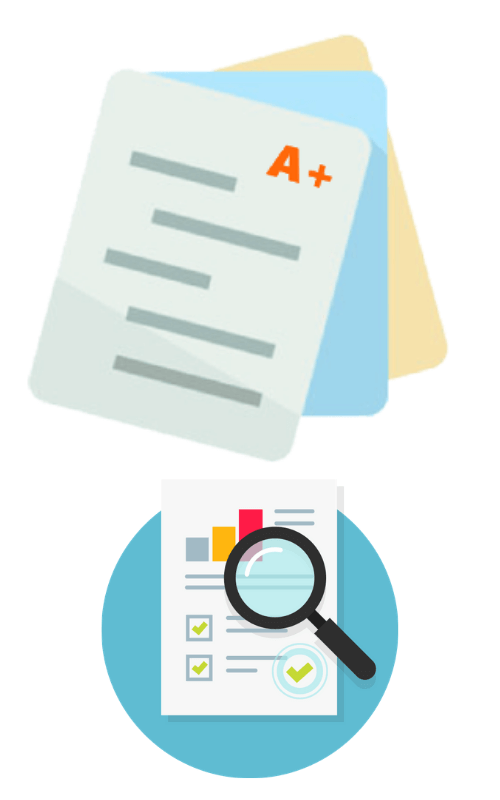
If you are in a hurry, here is a summary
Quick Steps How to write a Good Term Paper
1. Choose a Topic
Choose a good topic to write about as per the instructions
2. Research fully
Research the topic and study your sources.
3. Craft your Thesis
Formulate the thesis you will argue to prove
4. Develop an Outline
Create the structure of your paper, aka the Outline
5. Write the Draft
Write your paper following the draft in step 4
6. Cite your sources
Cite and reference the sources of your content
7. Revise your Paper
Revise any deviations against the instructions
8. Proofread
Read and re-read your paper to correct erros
Why Writing Term Papers is Important
While there are many reasons, here is a few important ones why schools assign term paper assignments
Development of writing skills
Term papers will help a student improve their ability to present arguments and counterarguments that are logical. Through reading loads of work from different sources, you gain knowledge on how to use different writing approaches in your term papers. At the same time, defending a thesis with your arguments also helps you grow your skills.
Serves as a motivation for the choice of your career
This mainly occurs when students are allowed to choose their topics. When students make sensible contributions to solve a problem experienced in certain topics they get the motivation to continue doing it more and more. This is mostly important in scientific fields.
Helps improve your communication ability
Term papers help students explain points and express their views. One usually learns new terms which helps improve the language. During the research, you usually come across different research methods in different disciplines. This helps improve communication with different people from different disciplines.
Comprehensive Guide How to write a good Term Paper that scores an A
In this detailed guide, we will teach you how to write a term paper that scores high grades. Our guide is divided into several steps that if followed, will make your paper exciting and simple to write. You will enjoy the process and formulate better points as well as organized structure and flow of ideas.
To write a good term paper, we recommend you use the following steps:
1. Choose a Topic for your Term Paper.
When the topic is not given by instructors it is important to select a topic wisely. Choose a topic to research based on your interests. To choose a good topic you will have to narrow an already limited area of research. The idea should be specific and manageable.
Narrowed down topics are preferred to prevent you from failure caused by writing researches from wide topics which are referred to as general overviews. The topic you chose should also be manageable.
The topic you choose should not be too technical to the extent that it causes you problems when finding research materials. If the topic is too hard it is advisable to seek the help of an instructor to clear any uncertainties that you may have.
It is important before settling on a specific topic to go through data and information that is available about the topic. This enables you to think of a thesis or hypothesis that you will write.
Explore pathways that have not been talked about more which you will look forward to shedding more light on in the essay. After pursuing the topic that you will write on, you should be able to explain the importance of your research and why it is essential.

The topic should challenge you the most when tackling it. It will help you discover new things and prevent you from being bored.
2. Research and thoroughly Understand the Topic.
The content for your class term paper should mainly come from the syllabus you are covering and the references on the textbooks you use. This should not be a limit. you should also look for content from other scholarly materials that are related to the ones you use. The first step is research in your school library.
Apart from libraries, you can get information from government agencies, businesses, and also knowledgeable individuals in the community. Always make notes of any kind of information that you find relevant. It is important that as you gather information on your topic, you also don’t forget to gather full bibliographic information of the sources you are obtaining the information from.
This information includes; the title, author, publisher, place of publication, the date of the publication, URLs, page numbers, date website pages were created and modified, and the date you accessed them. This information is used to cite the sources of your work to avoid plagiarism. Read more on how to write papers without plagiarizing and learn more.
How to find good sources for a Term Paper
One also can look for content using search engines, online encyclopedias, safe URLs, and any other general useful information found online.
Sites that are reliable with the information they put out have the following domain name extensions; .edu which means educational institutions, .gov which means governmental organizations, and .org which means non-profit organizations.
It is important to scrutinize information from commercial sites (.com). though most of them can be credible it is important to keep their business mind-set in mind while interacting with information on the site
Knowing how to evaluate credible and non-credible websites is important because you will easily eliminate irrelevant information and use lesser time researching.
You can bookmark internet sites that you rely much on their information.
You can use the Library to access other sources of information such as books, governmental publications, newspapers, magazines, dictionaries, vertical files, catalogs, reports, guides, journals, and encyclopedias.
Always watch out for political bias that can be included in governmental sites.
3. Craft a strong Thesis for your Term Paper
A thesis is the foundation of the structure of your entire term paper. Therefore, you must contact the instructor if you need further guidance or clarification. The thesis is the main point or the central idea of your term paper. Every argument that you make in the course of your paper must reflect on the thesis statement.
You should not rush to come up with a thesis statement. Think critically about it and come up with a strong statement. This statement should be based on your belief because you will defend this belief or support it in the whole essay.
You will need to have developed all the ideas you will talk about in the essay before formulating a thesis statement. This is because the ideas can change the thesis statement that was formulated before developing ideas.
Developing ideas requires the use of different materials to collect, organize and analyze them. A thesis statement is usually included in the introductory parts of the term paper. Mainly in the first or the second paragraph depending on the length of your term paper.
Characteristics of a good Thesis Statement for your Term Paper
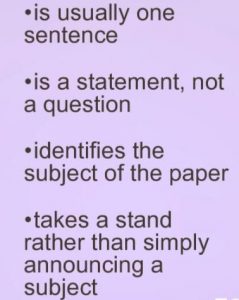 A thesis statement should be original.
A thesis statement should be original.- Do not cite any author or source on the thesis statement.
- It should be purely constructed from your understanding, using your own words and idea.
- The statement should not be general.
- A thesis should be a clear and precise statement. It should be something that is not common with the audience.
- An interesting and educative thesis statement will make the reader(s) of your term people want to continue riding what you have written.
- A good thesis statement answers the question of the essay and reveals to the reader your view and understanding of the subject in question.
- If it does not portray what is expected from the essay or put across an argument that people may want to oppose, the thesis statement has not served its purpose.
4. Develop a detailed Outline for your Paper
This is an important step because an outline helps you organize thoughts before you start writing your essay. After formulating a good thesis statement, the next thing that should be running through your mind is the main points that you need to put across to support your thesis statement.
These main points will serve as the sub-topics of your term paper. an outline will help you arrange your points. this is obviously from the stronger points to the weaker points.
Outlines can either be formal or informal. Formal outlines are sometimes required to be submitted together with the term paper. Informal outlines topics and subtopics are arranged using numbers and letters. The letter and numbers should be placed directly under one another. Topic headings and subheadings are to be grouped in a logical order.
Any information you researched regardless of how interesting it is that does not fit the framework of the essay or support the thesis statement should not be included in the outline. avoid throwing everything you find interesting in the outline. keep it narrow. Not everything interesting qualifies to be relevant.
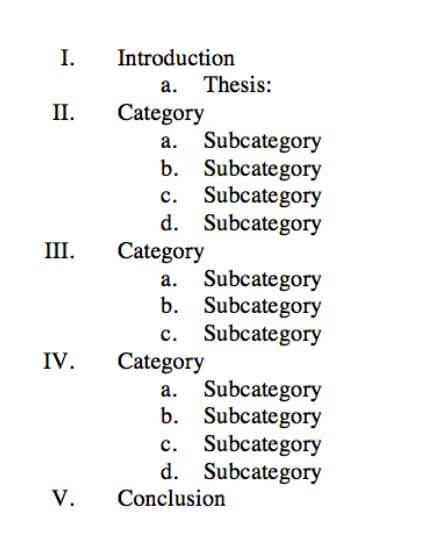
Why an Outline is very important for a Term Paper
An outline serves as a structure that acts as the skeleton for your term paper.
The outline helps you think carefully of your topics before writing them in the term paper. One can argue that a good outline is the most important thing when writing a term paper. you should ensure that all the points in the outline are well covered and flow well. You can include an introduction, body, and conclusion in your outline.
The Main category points
An outline will have the main categories of headings that are indicated by block Roman letters.
Sub-category points
These are are represented by small letters and serve to support your thesis in the paper.
In the introduction part of the outline, state the purpose of your term paper and plan on how to approach the topic. Identify and explain the points that you will cover in your essay briefly and why the readers should get excited about them.
In the body, you support your thesis statement using arguments. The body may comprise the results, analysis, methodology, and literature review. In the conclusion, you summarize your work by explaining the reason why you have come to a certain conclusion.
5. Write the term paper as a Draft
If you have completed the above processes, you should feel energized in this part. This is because you already have a clear direction to follow and organize your presentation. At this point, you write the main elements of the essay. Basically, you are putting flesh into the skeleton that you created in the outline in step 4 above.
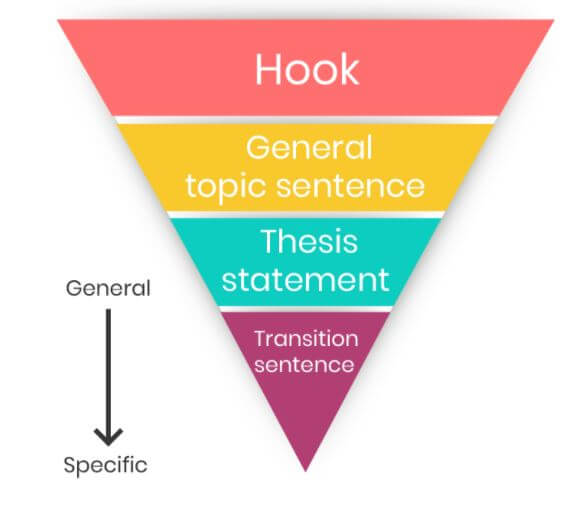 How to write the Introduction of a Term Paper
How to write the Introduction of a Term Paper
This is where you lay the context of your essay. The sentence that opens the research should be catchy. This sentence can either be a statistic, a provocative question, an anecdote, or an unusual fact.
In this part, you also give the reader a glimpse of your approach to the paper. the thesis statement then concludes the introduction part.
An effective introduction should answer the questions; what is this, why am I reading it, and what do you want to do. These questions are answered by providing the main idea’s general information to make the reader understand the claims that you will make in the term paper.
In addition, you should also tell the readers why they should continue reading your research. You have to convince and compel people to read your essay. Use logos, ethos, and pathos, to put across the position you will support in the research.
Mapping out the evidence that you will use to make your case is important in grabbing your reader’s attention. The introduction should not be very long and should take you less time to finish it up.
How to write the Body Paragraphs of a Term Paper
This is where the outline you made comes into play. There is no established rule that you should strictly follow the outline. The outline can evolve and there is no restriction of revising it and making changes. The only thing you should be keen on is to stay on track.
Focus on the thesis by providing points that support your main idea. Your sources should not help you organize your paper. What they should do is help you build your already organized term paper.
Each argument should be represented by itself in a single paragraph. This helps the reader flow the logic and flow in your term paper without getting confused.
For each argument, you make, support them with strong arguments. Start with a strong point, follow it with a stronger point, and finish with the strongest point. This is known as the Rule of Three.
You can also follow up your arguments with contrasting arguments. They are not particularly necessary but they can help your point become more convincing.
Your argument becomes more convincing if you prove why the contrasting argument is incorrect and why yours is correct.
The counterarguments should be strong points with strong claims that cannot be dismissed as weak.
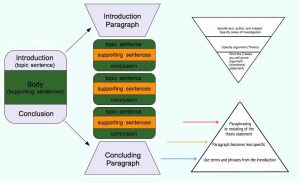
How to write the Body Paragraphs of a Term Paper
This is where you wrap up your presentation. You are required to summarize what you have written. You should explain why you believed that the arguments you have put across support your case.
Provide recommendations if the research is complete. If the research has not been completed, explain why you think that further research should be conducted.
Most people also conclude term papers with their thesis statements. If you wish to do so reword your thesis. Do not repeat it word to word.
6. Cite your sources and make a reference page.
The bibliography that you recorded during the research is used here. The two main styles used in writing are MLA and APA.
How to cite your Term Paper in MLA
In-text citations are used in quotes and paraphrases from another piece of work. in-text citations must correspond to a reference in the main reference list and contain the author’s name and page the reference is found. In-text citations should be included directly after the quote. The following are examples of in-text citations:
Author example: Kyle Dominic.
- Dominic states “…..”(189) or (Dominic 189) for single authors
- (Dominic, Mitchell, and Smith 189) or Mitchell et al. 189) for more than one author.
- (K. Dominic 60) and (J. Dominic 70) for authors with the same surname.
- (Dominic, Title of the citation 123) for authors with more than one cited work.
For sources with no page, numbers use the chapters and paragraph to make citations. For example: (Dominic, ch. 14) with ch referring to the chapter.
To cite books in MLA follow the order; author name, title, version, publisher, and year of publication. For example, Dominic. Sociology, 2nd ed, American Publisher, 2012.
MLA references are titled works-cited list. They should begin on a new page and be in alphabetical order depending on the names of the authors. The entries must be double-spaced with the second and subsequent lines of a source indented 0.5 inches from the margin.
How to Cite a Research Paper in APA
When preparing an APA referencing page you need to be cantered and on a new page. the reference list must contain the references in full for all the in-text references. The references should be arranged in alphabetical order of the names of the authors. The titles are considered when there are no authors.
A book is referenced as follows using APA:
Connolly, Rice (2010). Introduction to Physiognomy, London, England: Tender Publishers
Just like in MLA in-text citations are used quotes or paraphrases are used from another piece of work. they are in the main body of the text. They must correspond to a reference in the main reference list.
Single authors can be cited as follows: Dominic (2017) states…or … (Dominic, 2017). Direct quotes should have the page number after the date. For example, (Dominic, 2017, p.123).
Dominic and Peter (2010) state… or …. (Dominic & Peter, 2010). for two or more authors.
Dominic et al (2017) state……or …… (Dominic et al, 2017). for many authors. The first author’s surname should be used.
When there are no authors involved, use the titles to cite. For a book, report, or brochure title cite as follows: (Impacts of Genocide, 2003). For articles and chapters cite as follows: (“Ruthlessness”, 2017).
Use alphabets to reference authors with multiple works. For example, (Dominic, 2013a) and (Dominic, 2013b).
7. Revise your Research Paper draft to a final paper
After you finish writing the draft, ensure that your term paper is well-organized and includes transitions. Read your work and make sure that the paragraphs and the sentences flow well in the paper. Any fluffs or unnecessary words should be cut out.
Make sure your language is clear and that the word choices are concreated. Extra words should not be included in your term paper to just fill blank spaces or make your work sound fancy. Make sure you have used active voice instead of passive voice as well.
You can also ask your friend or relative to help you read your work before you submit it. Getting other people to read your work helps identify mistakes that you may have overlooked.
Do not accept to change everything your friend tells you. Change the things that make sense to you. A person who is familiar with your topic can help you ensure that you have nailed the details and main points in the term paper.
8. Proofread your Research Paper
proofreading basically involves reading through your paper to correct any small errors. Re-reading your paper severally is essential to make sure that your work is completely error-free.
One of the best methods you can use is reading your paper backward. This usually helps to identify more mistakes because you will feel a little disoriented.
Check for any mistakes that you may have made. They can be grammar or spelling mistakes. Remove extra sentences that do not make sense. You can also let your friends help you proofread your paper.
Proofreading is essential to check formatting, spelling, and grammatical errors. The following are some mistakes that you should be able to rectify by proofreading your work; dangling modifiers, comma use, spelling mistakes, incomplete sentences, easily confused words, apostrophes for possessives and plurals, misplaced quotations, and contractions.
Tools to help in writing and Proofreading your term paper
1. Grammarly
This is one of the best tools when you need help in term papers, essays, and research. Once you check your work on Grammarly you are assured of an error-free final product. They will highlight all your grammatical errors and sentences that do not make sense.
Grammarly also provides you with the solutions to these errors. The only shortcoming with Grammarly is that you have to pay for advanced services in their premium package.
2. Turnitin
This is a well-known plagiarism checker. It checks work that you submit against its database which contains all the work that has been submitted before and online pages. Instances of similarities are flagged and the percentage of similarity is displayed. Checking your work on Turnitin will help you submit plagiarism free work.
3. Thesis builder
When you are experiencing difficulties in formulating your thesis statement, you can save time by using several Thesis generating tools found online. These also help create and outline ideas in your essay.
4. Bibme
This is a tool that helps write bibliographies and reference lists. Let this tool keep track of your books and sources. When you are down a list is generated automatically in your preferred referencing style. This list is downloadable.
5. Memonic
Have you had problems assembling your ideas online? This is where this tool comes into play. Honestly, it is usually easy to find ideas online but it is hard to find those ideas again when in need of them later to write your term paper. This tool usually helps collect all these ideas in one place for easy referencing when needed.
6. Hemingway Editor
This tool helps to correct grammatical mistakes and proofread your work. all you have to do is copy your work and paste it into this tool. The tool will highlight errors such as too long sentences and too much use of adverbs. The errors are highlighted for easy correction.